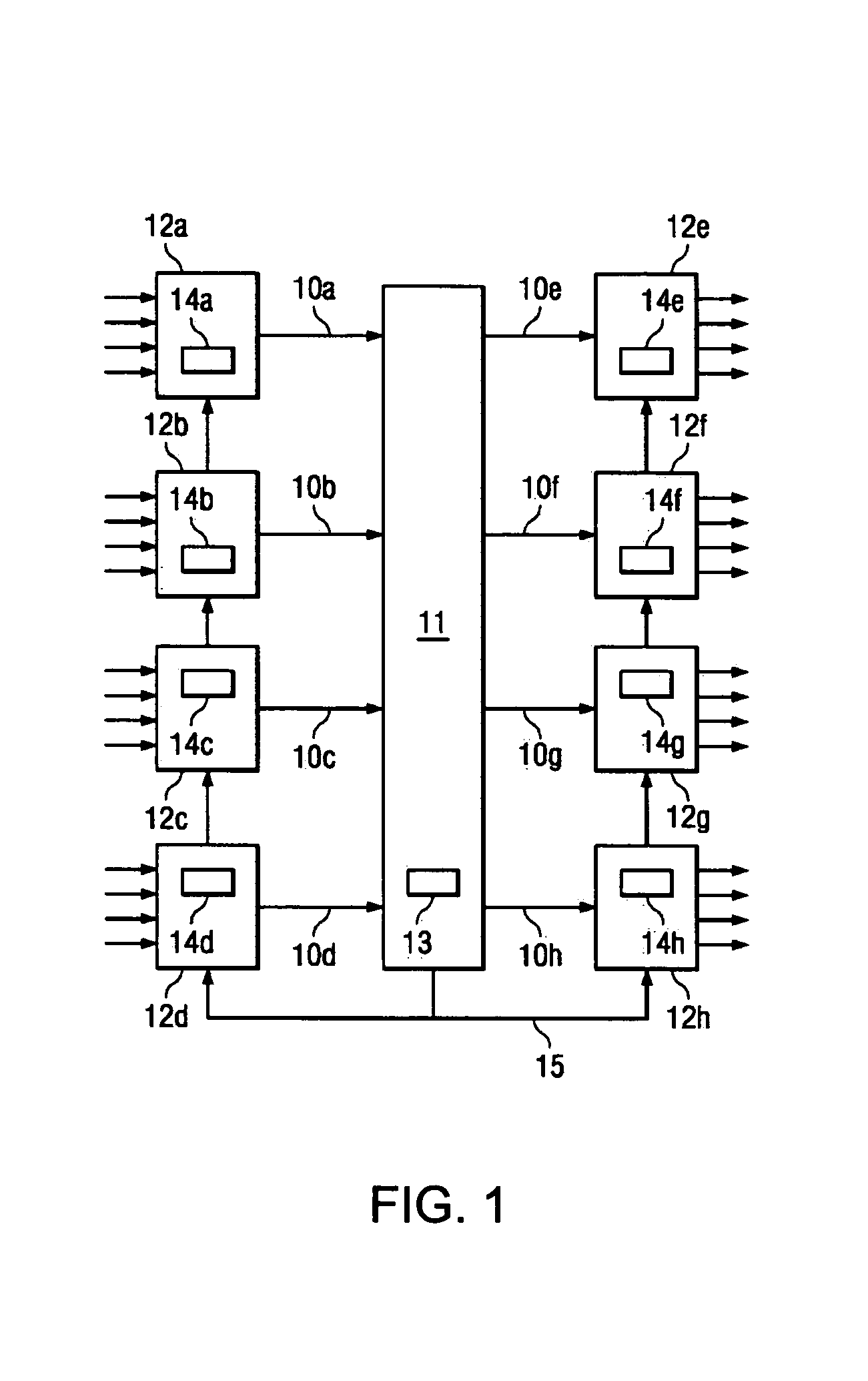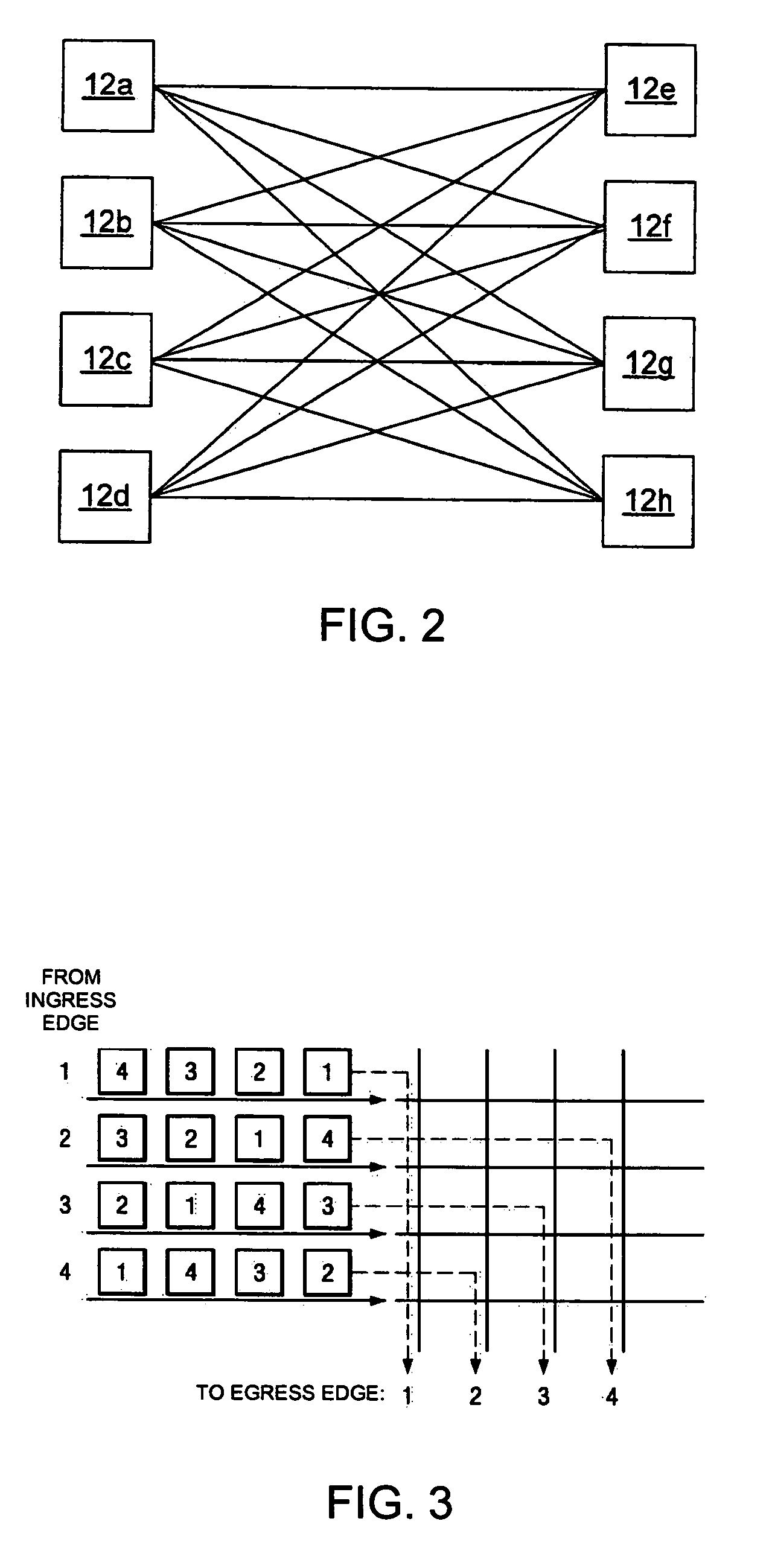System for switching data using dynamic scheduling
a dynamic scheduling and data technology, applied in the field of data switching, can solve the problems of data traffic based on static models, data transfer blockage, data traffic influence, etc., and achieve the effect of reducing latency and greater performan
- Summary
- Abstract
- Description
- Claims
- Application Information
AI Technical Summary
Benefits of technology
Problems solved by technology
Method used
Image
Examples
Embodiment Construction
[0036]A preferred embodiment of the invention is described below. It should be noted that this and any other embodiments described below are exemplary and are intended to be illustrative of the invention rather than limiting.
[0037]Broadly speaking, the invention comprises an architecture for a data switching system, wherein dynamic scheduling is used to maintain the sufficiency of the system's data transfer performance despite changes in the character of the incoming data traffic. In one embodiment, the present architecture comprises an optical switching core coupled to a plurality of edge units. The edge units each include a set of ingress ports and a set of egress ports. The switching core has a scheduler that maintains two non-blocking data transfer schedules, only one of which is active at any given time. Data is transferred from the ingress ports to the egress ports according to the active schedule. The switching core scheduler monitors data received from the edge units which i...
PUM
 Login to View More
Login to View More Abstract
Description
Claims
Application Information
 Login to View More
Login to View More - R&D
- Intellectual Property
- Life Sciences
- Materials
- Tech Scout
- Unparalleled Data Quality
- Higher Quality Content
- 60% Fewer Hallucinations
Browse by: Latest US Patents, China's latest patents, Technical Efficacy Thesaurus, Application Domain, Technology Topic, Popular Technical Reports.
© 2025 PatSnap. All rights reserved.Legal|Privacy policy|Modern Slavery Act Transparency Statement|Sitemap|About US| Contact US: help@patsnap.com



